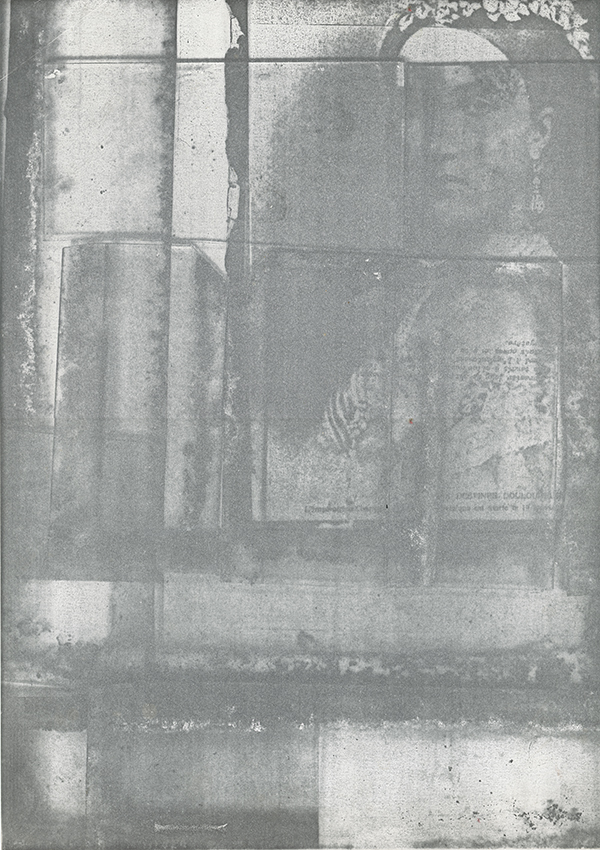La galerie Nadja Vilenne a le plaisir de vous annoncer sa participation. à la foire d’art contemporain de Vienne, Viennacontemporary et y présentera des oeuvres de :
The gallery Nadja Vilenne is pleased to announce its participation. at the contemporary art fair in Vienna, Viennacontemporary and will present works by:
JACQUELINE MESMAEKER
Section : Explorations curated by Harald Krejci, Curator Museum Belvedere, Vienna
Booth F08
Marx Halle
Karl-Farkas-Gasse 19, 1030 Vienna.
Thursday, 26 September 2019, Vernissage: 4:00 pm–8:00 pm
Friday, 27 September 2019: 12:00 pm–7:00 pm
Saturday, 28 September 2019: 11:00 am–7:00 pm
Sunday, 29 September 2019: 11:00 am–6:00 pm
Jacqueline Mesmaeker
Les Charlotte II, 1977
Photocopies de superpositions d’images et de morceaux de verre, (16) x 42 x 29,4 cm Encadrées, (16) x 95 x 65 cm
Explorations, curated by Harald Krejci
The section Exploration gathers various galleries from Europe presenting artistic positions of the 60s and 70s in a concentrated presentation of works. The section shows very different artistic attitudes, all of which, in their specific way, indirectly link or refer to the intellectual heritage of post-war surrealism.
In the 1960s, many artists reinterpreted abstraction as the encoding and decoding of social problems on a poetic level. The intellectual heritage of surrealism played an essential role in this. It offered the opportunity to regain the critical potential of art in times of its political appropriation on both sides of the Iron Curtain. From then on, artists were concerned with the problematization of abstraction as a form of overlapping thinking of different levels of consciousness. Central to this was the concept of poetry.
Mesmaeker’s strictly conceptual method is a poetic approach and a shift of space and biography, of dream and reality, within her work. The photographic works of Géza Perneczky and Michal Kern discursively point out the ephemeral dimension of art, while Josef Bauer’s fragmentation of language as a poetic dimension manages to expand the language space into the third dimension. At second glance, Robert Klemmer’s superficial pop-art colorfulness and self-portrayal turn out to be an introspective, existential dimension of the ego. With his works of the 60s and 70s, the Russian artist Alexander Pankin draws on the tradition of the abstraction of avant-garde and reflects on the question of the poetic aspect of figurative painting. Yuri Zlotnikov’s painting follows the analytical approach to abstraction in the tradition of avant-garde, yet still remaining committed to pictorial and poetic qualities
Tess Jaray and Horia Damian deal with reflections on architectural space and emphasize the poetic over the rational. Milan Adamčiak, on the other hand, uses music to open up the poetic space. From a certain point onwards, Alberto Biasi operates only under the programmatic group name Gruppo N and works on the poetic potential of rational-geometric structures. In his kind of art-brut quoting painting, Alfred Klinkan’s art places biographical references and Western myths in new narrative contexts. Vakhtang Kokiashvili’s work relates to the folklore, myths, and mysticism of his homeland.
[sociallinkz]

